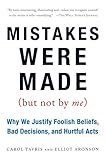The Consumer Revolution and Social Change
This week I have been attending SugarCon2013 in NYC. SugarCRM is an open source CRM platform that is expanding its market share in the CRM world. Capitalizing on the elasticity of cloud computing and the open source community of developers, Sugar has created a culture of client-centered solutions for contact management.
What does this have to do with social change and social capital?
A couple of things: In previous posts, I have talked about the industrialization of philanthropy. When exploring this topic I have highlighted the research of other thought leaders like Beth Kantor and Lucy Bernholz. An industry is a combination of things ranging from data collection and analysis tools to peer recognized reviews and reporting mechanisms, and of course some exchange of value. After spending the past couple of days learning about CRM and specifically how I can take Place2Give and the donor-charity matching platform we have developed to provide more services and support for advisors, donors and charities, my assumptions around the consumerism of philanthropy have been re-enforced. We are moving from a digital revolution to a consumer revolution.
What does this mean for charities and advisors? Donors are now taking a consumer approach to their philanthropy. They are behaving the same way when researching a general purchase as they do when looking at charities. The way that web-browsing technology works now is by learning your search and click patterns. In Vanity Fair this month there is an article “Facebook Leans In” about how Facebook "sneakily" inserted product placements in people's newsfeeds. The product placement is unique to the type of user simply based on the information that has been garnered through patterns of searches and clicks.
This is no longer a seller’s market. The consumer is more sophisticated and educated on the issues, ideas, products and solutions they are buying. They are not just asking questions on price, but they are asking deeper questions around the business practices of the company, and their leadership, that they are purchasing products from. The range of this information gathering stretches across cause-related issues (how organizations generate revenue and implement programs on specific issues) to the values of the management team. An example of the former was the push back of consumers around the "Pinkwashing" of several consumer goods in the month of October and the questions about how much of their consumer dollar is going to the cancer related charities, how are those organizations using the funds and what is happening as a result. The latter was demonstrated in the tech community when there was a public revolt against Go Daddy and the CEO's elephant hunting safari.
Following this line of inquiry further, one can see the value of cause marketing by companies in conjunction with their favorite charities, but what about the charities themselves. Aside from cause marketing campaigns, how are they tapping into retail philanthropy behavior?
Charities have played into this consumer power by creating "menus" and "gift books" that provide the consumer donor selection in their giving. While success can be seen on dollars raised for some of these campaigns, my observation is that the smaller organizations who have implemented these programs have suffered some devastating effects (including the de-stabilization and under-capitalization) of the operations of the very organizations that are to deliver on the projects. This type of designated giving has cannibalized some United Way campaigns in North America to the extent that even the admin fee that United Way charges to designate a gift doesn't recoup the costs of directing the donation in the first place.(The Philanthropist, “In Search of Relevance: Observations on United Way Fund Distribution”).
But this type of consumer approach to philanthropy is only the start. I was interested to see how far these patterns could be carried out.
Last year during the presidential elections I was reading up on the different platforms of the Republican candidates and Obama. I was curious that whenever I looked for information on the Republican Party the top results were always negatively slanted and the opposite was true for Obama. So I asked a friend who does SEO development and he told me that my previous search history was influencing the results. Looking back on this computer I had researched buying a Prius, how to start a permaculture garden, some sites on international development, read the Huffington Post and various TED and YouTube videos. All of these in addition to the regular searches that I do informed Google that I was more inclined to a Democratic Party view than a Republican view.
Charities are just getting into this consumer analytics game. In a response to donors saying that they don't want to be solicited over and over again, and with limited capital resources, charities want to be more targeted with their messages. Donors should be happy about this on some level - the organizations listened! They understand that you want money to go towards programming and not fundraising, yet in order to do the programs they need to fundraise (unless they have found an alternative revenue stream). So they are being more strategic, they are reducing their annual spend on direct mail and untargeted solicitations by sending out meaningful information that donors have indicated is of interest based on their online consumer behavior.
It will be interesting to see how this consumer based approach to philanthropy affects the long-term giving cycles of donors and the revenue streams of charities.









Comments
Post new comment